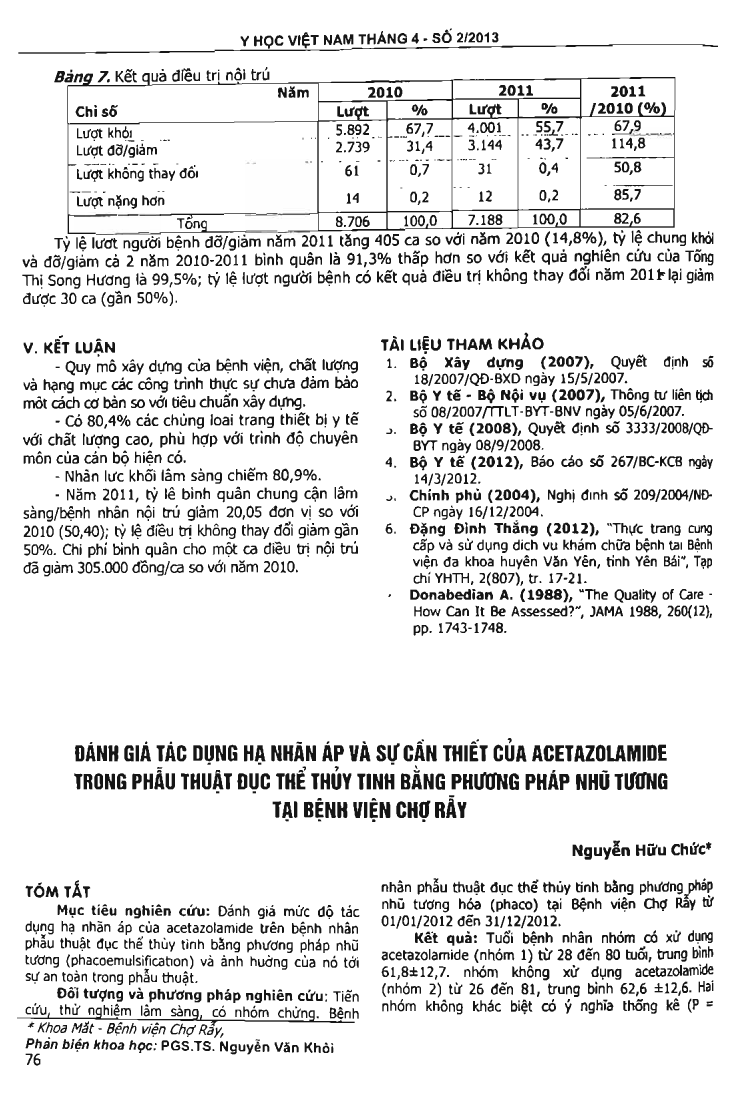
Study objectives: To assess the level of intraocular pressure (IOP) reducing effectof acetazolamide in patients with phacoemulsification and its impact on the safety of the surgery. Subjects and Methods: Prospective, clinical trials, with control group. Patients with phacoemulsification surgery (phaco) at Cho Ray Hospital from 01/01/2012 to 31/12/2012. Results: Ages of the patients in the group "used acetazolamide" (group 1) are from 28 to 80 years, on average 61.8 + or - 12.7, group "did not use acetazolamide" (group 2) from 26 to 81, on average 62.6 + or - 12.6. The two groups did not differ significantly (P = 0.000). Proportions of men and women do not differ. Intraocular pressures of the 2 groups range from 15 mmHg to 23 mmHg. Group 1 has the average of 19.1 + or - 2.2, group 2: 19.4 + or - 2.3. The hardness of the nuclear cataract from level 2 to level 4. The difference between the intraocular pressures of group (1) patients before and after oral acetazolamide and that of placebo group was not statistically significant (T-test-test, p = 0.000).Between the two groups there is no difference in complication rate. However, the hardness of the nuclear cataract, the duration of surgery are factors that affect results. Patients in group 1 who had visions of 5/10: 65/80 (81.3 percent) patients, group 2: 64/80 (80.0 percent), the difference is not significant. Conclusion: - On patients who had cataract surgeries with normal intraocular pressure, acetazolamide has no significant effect on redution of the intraocular pressure. - Acetazolamide has no important role in the safety of phacoemulsification surgery. The factors affecting the complications are the the hardness of the nuclear cataract, and the surgical duration.
- Đăng nhập để gửi ý kiến
